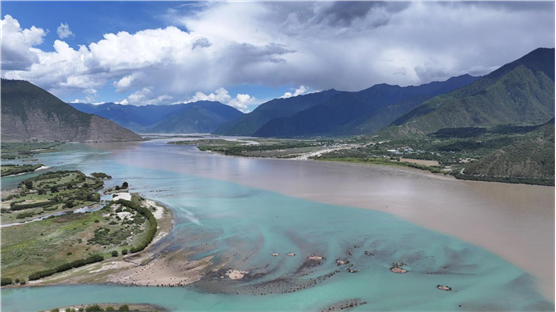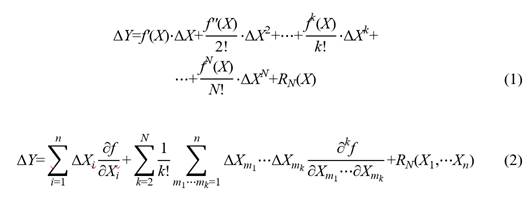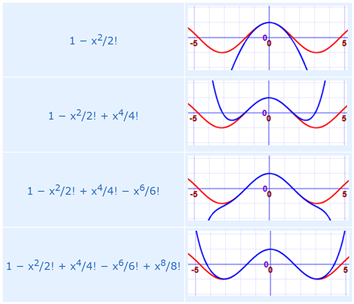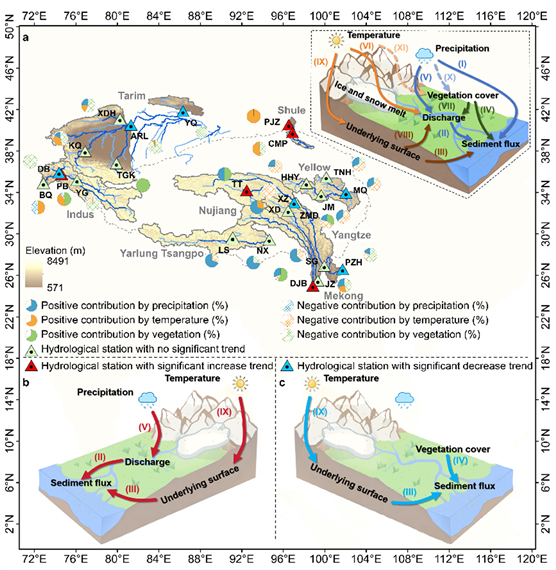Prof. Wenxin Huai and Yao Yue Group, Wuhan University
The Qinghai-Tibet Plateau, known as the “Water Tower of Asia” and the source region of several major rivers, nurtures the Yangtze, Yellow, Mekong, Nu, and Yarlung Tsangpo rivers. Over the past 60 years, temperature and precipitation in the whole region have been rising, yet sediment flux trends have bifurcated: some rivers have seen doubled sediment fluxes, while others show a steady decline.
The core paradoxes are:
(1) Theoretically, increased precipitation should have enhanced erosion, and thus, producing more sediment, but why have some rivers become clearer despite wetter conditions?
(2) Rising temperature should have melted the permafrost and made the land softer, but why has the soil in some regions become more stable despite warmer climate?

Clear Niyang River discharging into the turbid Yarlung Tsangpo River, showing distinguished trends in sediment flux (Photoed by Prof. Zhiwei Li, August 2024).
1. Peeling off the “onion skin” of sediment yield process on the Qinghai-Tibet Plateau with the Multi-order Multivariate Climate Elasticity Model and reconstructing the flux series.
Traditional methods for quantifying sediment production either introduce too many parameters by detailing physical mechanisms, which is difficult to apply over large areas, or oversimplify the process based on statistical analysis, omitting critical mechanisms. A joint team from Wuhan, Sichuan, Beijing Normal, Colombia, Edinburgh, and Plymouth universities drew inspiration from the Taylor expansion in calculus: regardless of the true form of the sediment production process, when iteratively adding key influencing factors as power series within a convergent domain, we can ultimately approximates the true form.

Single-variable Taylor expansion (Equation 1) and multivariable Taylor expansion (Equation 2).

Using the function cos(x) as an example to illustrate how the Taylor series approximates the true value within the convergent domain.
Building on this concept, the team developed the Multi-order Multivariate Climate Elasticity Model. This model identifies the key factors influencing sediment yield on the Qinghai-Tibet Plateau and quantifies the contributions of major physical pathways driving sediment changes. It also overcomes the data limitation of traditional methods by using data that is relatively easy to obtain over large areas.
Thus, various sediment pathways can be traced as clearly as deconstructing a circuit—How does precipitation transform into runoff? How does warming alter underlying surface conditions? How does vegetation “trap” sediment? Eleven physical sediment production pathways were quantified individually.

Sediment flux trends and contributions of major pathways in Qinghai-Tibet Plateau rivers
Meanwhile, the key pathways and controlling factors for sediment flux changes have been quantified —In basins with increasing sediment flux trend, the major pathways include increased soil erodibility due to permafrost thaw (Pathways IX ~ III) and increased runoff from rising precipitation (Pathways V ~ II). In basins with decreasing sediment flux trend, the leading pathways are sediment retention due to vegetation expansion (Pathway IV) and surface changes driven by rising temperatures (Pathways IX ~ III). Basins where precipitation, temperature, and vegetation cover are the primary controlling factors account for 16%, 36%, and 48% of the total, respectively.
2. Switch for the bifurcation of sediment flux trends lies in the “Tug-of-War” between original vegetation condition and precipitation growth rate.
The Original vegetation condition and precipitation growth rate are the key factors causing the divergent trends in sediment flux. If precipitation decreases or increases slowly, sediment flux may decline. On the other hand, when precipitation increases rapidly, the original vegetation condition often determines the trend in sediment flux: in areas where vegetation cover fraction is originally low, warmer and wetter conditions stimulate fast spread of vegetation, stabilizing soil and reducing sediment yield; in areas where vegetation cover is already well-established, the marginal conservation effect of vegetation become limited, and sediment flux may continue to increase. It implies that sediment flux trends of certain river basins on the Qinghai-Tibet Plateau may reverse due to changes in precipitation growth rates and vegetation cover in the future.

Driving factors and future projections of bifurcated sediment flux trends.
This study was published on February 7 in Communications Earth & Environment, a cross-disciplinary, open-access journal under the Nature portfolio, under the title “Original vegetation condition and precipitation growth rate bifurcate sediment flux trend on the Qinghai-Tibet Plateau”. The research provides an in-depth analysis of the mechanisms behind sediment flux changes in major Qinghai-Tibet Plateau rivers. By innovatively setting up the Multi-order Multivariate Climate Elasticity Model, it clarifies the complex impacts of precipitation, temperature, and vegetation cover on sediment flux changes and their interactions, systematically explains trend bifurcation, and provides a theoretical foundation for predicting sediment flux under climate change. The findings offer critical insights for water resource management and ecological conservation in global alpine regions.
Read the study: https://doi.org/10.1038/s43247-025-02075-w
Citation
Guo J., Yue Y., Huai W., Yan X., Borthwick A.G.L., Chai Y., Li S., Li Z., Wang Z., Miao C. and Yang Z. (2025) Original vegetation condition and precipitation growth rate bifurcate sediment flux trend on the Qinghai-Tibet Plateau. Communications Earth & Environment, 6(90). 10 pages. https://doi.org/10.1038/s43247-025-02075-w